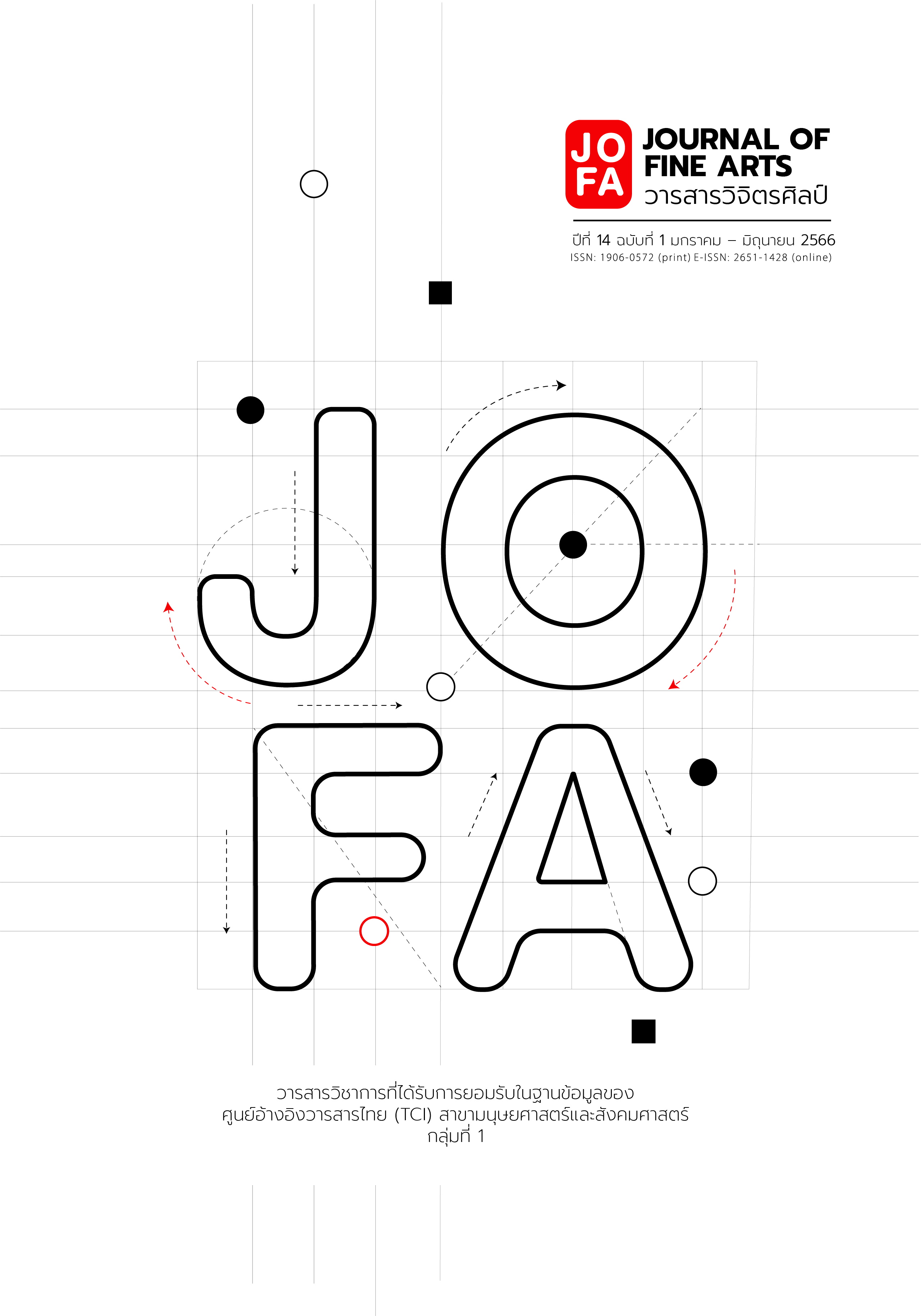Innovative Design and Development of Woven Paper OTOP Products, Ban Non Samnak, Sisaket Province
Main Article Content
Abstract
A major problem for community enterprise entrepreneurs is that process materials and product designs are replicated in many businesses. Therefore, products lack identity and are unpopular with consumers. As a result, there is a slowdown in economic growth at the foundation level. Ban Non Samnak Paper Basketry Group is yet another business lacking a unique product identity that can draw the attention of consumers. This research was thus conducted to develop products that possess a unique identity. Experimental studies were carried out to produce paper from agricultural waste in the surrounding community. Products created using this paper were then designed and developed to meet market needs. The methodology used during the investigation was participatory action research. The study and product development were based on the concepts of material-based shape design, consumer behavior and analysis of the workplace environment. The results of the research showed that suitable agricultural waste products in the community environment were corn stems and banana peel. These waste products could be converted into pulp by boiling the pulp in 10 g of sodium hydroxide: 1 liter of water, heat at 100 - 120 degrees Celsius for 2 hours afterward. The 120 bar high-pressure water jet compresses the boiled filament water to grind the fine pulp and rinse the sodium hydroxide at the same time. The pulp was transformed into sheets of yellow corn paper and brown banana paper. When analyzing the material characteristics, it was concluded that in the development of new products, it would take advantage of the natural color of the material are corn stems that gave light yellow paper, and banana cladding that gave dark brown paper. Including the texture of the material formed by the distribution and arrangement of different fibers used together to create beauty. The study results were then passed on to the community. Nine prototypes were designed and developed with the community. These were tested in the market with a target group of 100 tourists, aged 25 - 45. Survey results showed that the overall satisfaction score was 4.56 (very good), and found that most of the consumers had a positive attitude towards the products and would be interested in purchasing them as souvenirs. Respondents identified the novelty use of natural materials, unique identity and creative design as reasons for their high level of appeal.
Article Details

This work is licensed under a Creative Commons Attribution-NonCommercial-NoDerivatives 4.0 International License.
References
Charungjitsunthorn, W. lakkān læ nǣokhit kānʻō̜kbǣp phalittaphan. Bangkok: APPA Printing Group Company Limited, 2005.
Farangthong, S. “phūbō̜riphōk sīkhīeo. [Green Consumer].” Energy Saving Journal 5, no. 52(2012): 74-75.
Jearakul, T. “Panhā Læ Nǣothāng Kān Prap Tūa Khō̜ng OTOP Phư̄a Phrō̜m Rap kān pœ̄t AEC. [The Problems and the Adaptation of OTOP to AEC].” The Executive Journal 34, no. 1(2014): 185.
Klankaew, P. “chana khāt dūai kān mō̜ng talāt bǣp khit tāng.” Marketing and Branding Journal 17, no. 161(2011): 92 – 95.
Mgronline. “Thō̜trahat Lap Sāng Brǣn Thai Hai Pang. [Decoding the secret to create a Thai brand].” Mgronline. Accessed May 25, 2019. https://mgronline.com/business/detail/9620000086178.
Ngoenprasoetsi, N. “Kānwičhai Chœ̄ng Patibatkān Bǣp Mī Sūan Rūam. [Participatory Action Research].” Journal of Social Sciences and Humanities, Faculty of Social Sciences Kasetsart University 27, no. 2(2001): 61- 62.
Niamsap, N. “Nǣothāng Kānʻō̜kbǣp Rūpsong Dōi ʻing Watsadu Form follows material. [Design form by Based on material guidelines “Form follows material”].” Academic Journal Faculty of Architecture Chulalongkorn University 35, (2008): 26.
Samoechai, C. Phrưttikam Phūbō̜riphōk. [Consumer behavior]. Bangkok: expernet, 2007.
Srisa – ard, B. Kānwičhai Bư̄angton. [Preliminary research]. Bangkok: suwiriyasan, 2000.
Thai Industrial Standards Institute Ministry of Industry. Māttrathān Phalittaphan Chumchon Chaksān Kradāt (mō̜ phō̜ chō̜. 222/2547). Bangkok: Ministry of Industry, 2012.


